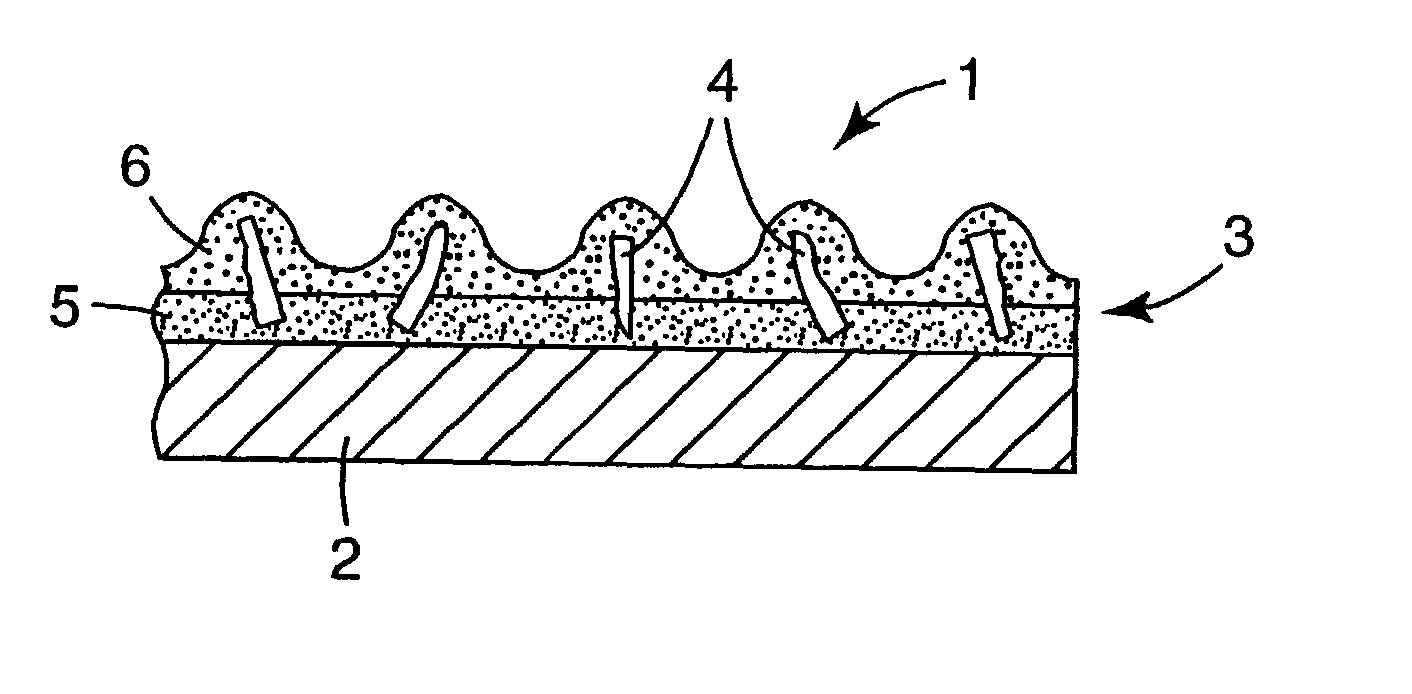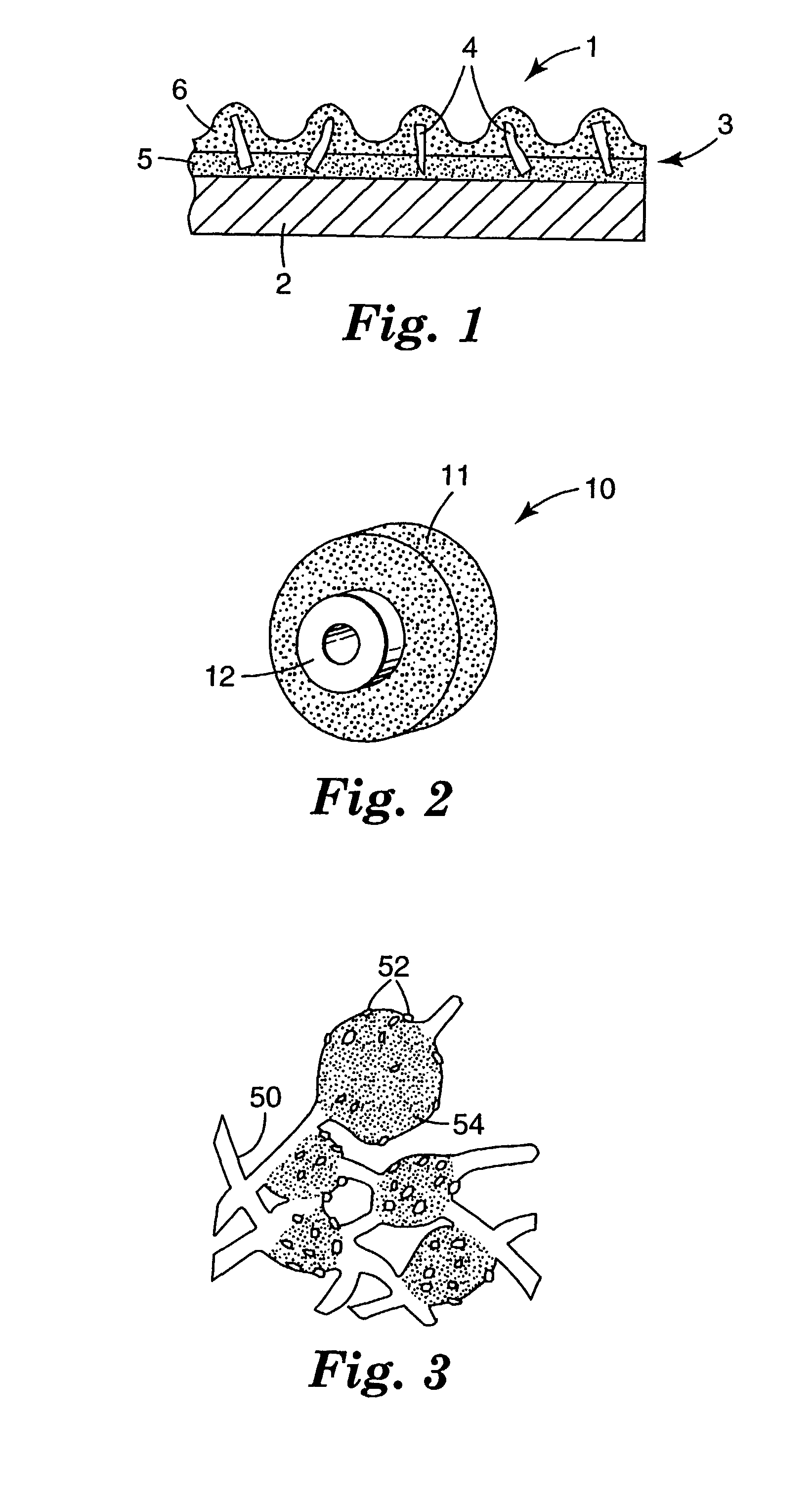Abrasive particles, abrasive articles, and methods of making and using the same
a technology of abrasive particles and abrasives, which is applied in the field of abrasive particles, abrasive articles, and methods of making and using the same, can solve the problems of significant decrease in abrading performance, complicated process for making sol-gel-derived abrasive particles, and increase the melting temperature of the overall system, so as to reduce the melting eutectic and facilitate the formation of amorphous materials. , the effect o
- Summary
- Abstract
- Description
- Claims
- Application Information
AI Technical Summary
Benefits of technology
Problems solved by technology
Method used
Image
Examples
examples 1-20
[0137] A 250-ml polyethylene bottle (7.3-cm diameter) was charged with a 50-gram mixture of various powders (as shown below in Table 1, with sources of the raw materials listed in Table 2), 75 grams of isopropyl alcohol, and 200 grams of alumina milling media (cylindrical shape, both height and diameter of 0.635 cm; 99.9% alumina; obtained from Coors, Golden, Colo.). The contents of the polyethylene bottle were milled for 16 hours at 60 revolutions per minute (rpm). After the milling, the milling media were removed and the slurry was poured onto a warm (approximately 75.degree. C.) glass ("PYREX") pan and dried. The dried mixture was screened through a 70-mesh screen (212-micrometer opening size) with the aid of a paint brush.
[0138] After grinding and screening, the mixture of milled feed particles was fed slowly (0.5 gram / minute) into a hydrogen / oxygen torch flame to melt the particles. The torch used to melt the particles, thereby generating molten droplets, was a Bethlehem bench ...
example 21
[0145] About 25 grams of the beads from Example 1 were placed in a graphite die and hot-pressed using uniaxial pressing apparatus (obtained under the trade designation "HP-50", Thermal Technology Inc., Brea, Calif.). The hot-pressing was carried out in an argon atmosphere and 13.8 megapascals (MPa) (2000 pounds per square inch or 2 ksi) pressure. The hot-pressing furnace was ramped up to 970.degree. C., at 25.degree. C. / minute. The result was a disc, 3.4 cm in diameter and 0.6 cm thick, of transparent bulk material. A DTA trace was conducted as described in Example 1-20. The trace exhibited an endothermic event at temperature around 885.degree. C., as evidenced by the downward change in the curve of the trace. It is believed this event was due to the glass transition (T.sub.g) of the glass material. The same material exhibited an exothermic event at a temperature around 928.degree. C., as evidenced by the sharp peak in the trace. It is believed that this event was due to the crystal...
example 22
[0146] A 250-ml polyethylene bottle (7.3-cm diameter) was charged with the following 50-gram mixture: 19.3 grams of alumina particles (obtained from Alcoa Industrial Chemicals, Bauxite, Ark., under the trade designation "Al6SG"), 9.5 grams of zirconium oxide particles (obtained from Zirconia Sales, Inc. of Marietta, Ga. under the trade designation "DK-2"), and 21.2 grams of lanthanum oxide particles (obtained from Molycorp Inc., Mountain Pass, Calif.), 75 grams of isopropyl alcohol, and 200 grams of alumina milling media (cylindrical in shape, both height and diameter of 0.635 cm; 99.9% alumina; obtained from Coors, Golden, Colo.). The contents of the polyethylene bottle were milled for 16 hours at 60 revolutions per minute (rpm). The ratio of alumina to zirconia in the starting material was 2:1, and the alumina and zirconia collectively made up about 58 weight percent (wt-%). After the milling, the milling media were removed and the slurry was poured onto a warm (approximately 75.d...
PUM
| Property | Measurement | Unit |
|---|---|---|
| temperatures | aaaaa | aaaaa |
| temperature | aaaaa | aaaaa |
| diameter | aaaaa | aaaaa |
Abstract
Description
Claims
Application Information
 Login to View More
Login to View More - R&D
- Intellectual Property
- Life Sciences
- Materials
- Tech Scout
- Unparalleled Data Quality
- Higher Quality Content
- 60% Fewer Hallucinations
Browse by: Latest US Patents, China's latest patents, Technical Efficacy Thesaurus, Application Domain, Technology Topic, Popular Technical Reports.
© 2025 PatSnap. All rights reserved.Legal|Privacy policy|Modern Slavery Act Transparency Statement|Sitemap|About US| Contact US: help@patsnap.com



